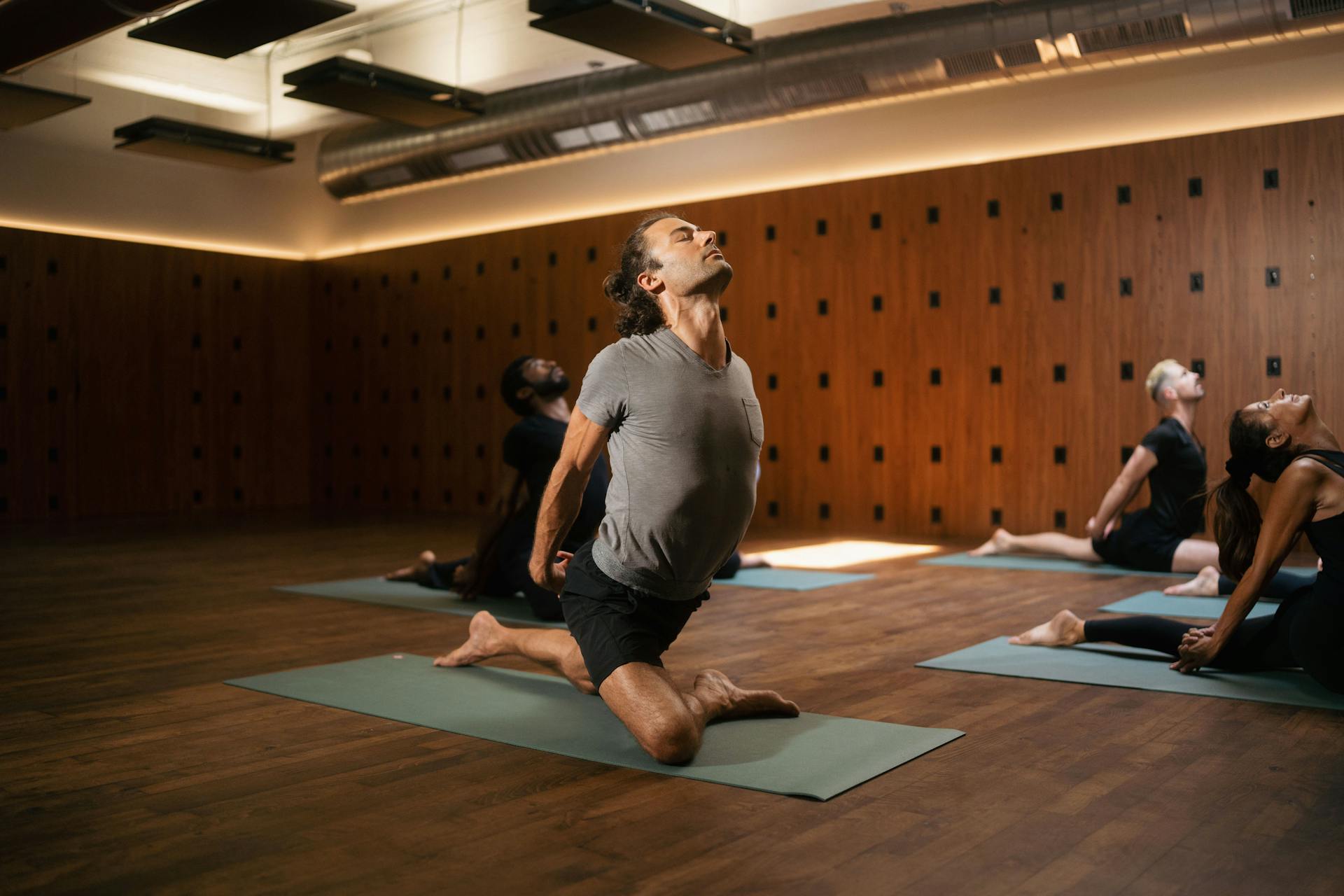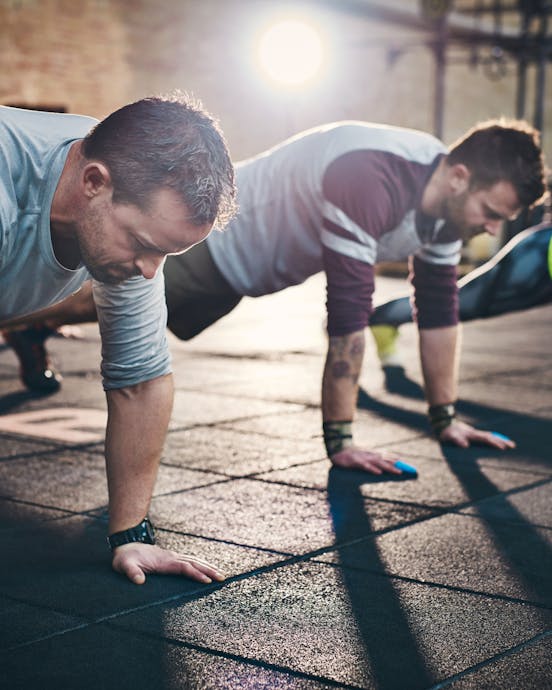If you are looking to switch to a more intense workout, hot yoga might be the perfect challenge for you. More importantly, it comes with major health and wellbeing benefits. Here is what you need to know about this highly effective yoga style, including some expert advice on how to practice it safely.
What is hot yoga?
Quite simply, the term “hot yoga” refers to any style of yoga that is practiced in a heated room. This revolutionary concept began with the well-known Bikram yoga, developed by Bikram Choudhury in the 1970s. This focused on a set sequence of yoga poses in temperatures of 42ºC, seeking to emulate the conditions in India where yoga originates.
From there, it flourished into various styles to this day, from a relaxing warm flow around 30ºC, to a hot flow or a hot stretch at 35ºC. Ultimately, whatever the style, the heat provides a more impactful workout than with the regular yoga practice, as well as added benefits for the yogi.
So why should you try hot yoga?
1. To increase flexibility
Whether you’re a complete beginner or an experienced yogi, hot yoga will help to stretch your body further than you could at room temperature. In addition, the heat helps to soften muscles and tendons which can reduce your chances of injury when tackling more challenging poses.
2. To strengthen muscles
Practicing yoga in a heated room is a great way to tone your muscles, as it stimulates the muscles’ ability to build mass and reduce subcutaneous fat. Along with increasing muscle strength and endurance, you also work on improving your balance. As a result, the body is better able to resist injuries or recover from them faster.
3. To improve circulation
As your body warms up in a hot yoga session, your blood flow increases. This, in turn, can help the delivery of oxygen and nutrients to your tissues and organs. If you have an injury, improved blood flow can also support with reducing swelling and pain.
Lastly, as the heat causes perspiration, practicing hot yoga makes it easier for your body to eliminate harmful toxins and other impurities.
4. To support mental health
One of the most significant benefits of practicing hot yoga is that it can improve your mental health. This is thanks to the high levels of endorphins that are released as you progress through your session. Additionally, the focus on deep and controlled breathing can help to calm the mind, also aided by the heat and humidity that encourage a mindful state. As a result, hot yoga is an excellent option for those suffering from depression and anxiety.
5. To sleep better
The heat also has a positive impact on the quality of your sleep. This can be beneficial for those who struggle to get enough deep, restful sleep, helping them feel more energized throughout the day. In addition, the breathing exercises taught in hot yoga can help with the symptoms of insomnia, such as irritability and difficulty falling asleep.
6. To lower the risk of heart disease
This type of workout also supports the cardiovascular system, helping to strengthen your heart and lungs while increasing the efficiency of the metabolism. This can lead to lower blood pressure, reducing the risk of stroke and heart attack.
And, according to a study by Texas State University researchers, practicing yoga in hot environments can in fact reduce blood pressure in people with mild hypertension. Participants enrolled in the study were asked to practice three hours of hot yoga each week for 12 weeks. Results showed a significant decrease in systolic and diastolic blood pressure in the group that practiced hot yoga.
7. To boost the metabolism
The combination of heat and the intensity of the workout means that people who take hot yoga tend to burn more calories than those who don’t. This, in turn, can help to lower the risk of developing Type 2 diabetes and other metabolic disorders.
How to prepare for your first session
1. Introduce yourself to the trainer
The top recommendation is to talk with your instructor before class. If you have any questions or any injuries, this is the ideal moment to let your trainer know. This will allow them to give you proper guidance without exacerbating any issues you're dealing with.
2. Hydrate
It is recommended to drink plenty of water before, during, and after each hot yoga class, as dehydration can cause dizziness and potential fainting. Take small sips and remember it is best to drink room temperature water rather than ice cold water, which can shock your system. A sports drink is also a good idea to help replenish electrolytes lost in the intense sweating.
During the session, if you feel lightheaded or dizzy, try the child’s pose (arms stretched out and head on the mat) or alternatively, leave the room and rest in a cooler environment.
3. Wear suitable clothing
Opt for lightweight, moisture-wicking and fast drying sportwear. Avoid wearing long pants and loose-fitting tops as these will attract and retain more heat. For women, a comfortable sports bra or crop top paired with capris made from breathable fabric will work best, and for men, some comfortable shorts.
4. Avoid perfumes
You should consider leaving any perfumes and cologne at home, as they will become heavy when affected by the heat and humidity, and could irritate your nose.
5. Bring a towel
You should also make sure to bring a towel with you. You will be perspiring a lot during class, and if you don't have a towel to place over your mat, it is possible you could slip. In addition, a towel will soak up sweat to avoid your clothing getting wet and heavy, and prevent any unnecessary overheating.
6. Listen to your body
When practicing hot yoga, it is important to pay attention to your body and avoid overstretching your muscles, as this can lead to injury. If you are having trouble with a stretch, slow down or stop altogether.
As with any exercise, hot yoga can be uncomfortable or even painful at first. However, as long as you listen to your body and take breaks when you need them, it should be safe for most beginners.
7. Show up early
Finally, if you're going to be doing a hot yoga class for the first time, be sure to arrive early for class. This is the best way to ensure that you are not in a rush: you can choose a spot in the studio where you will be most comfortable, and even acclimate to the heat.
Further safety advice
Certain medical conditions and medications can increase the risk of heat exhaustion. If you are concerned about the safety of hot yoga for your body, it’s always best to check with your doctor before starting any new exercise. They will be able to let you know whether hot yoga is appropriate for your specific circumstances, as well as advise you on how to modify the exercises or find a less strenuous class if necessary.
Furthermore, if you have an injury, it's a good idea to talk to your doctor before practicing hot yoga. And if you're over 40, it may be helpful to build up to hot classes by attending warm ones before moving on to the more intense heat of a hot room.



